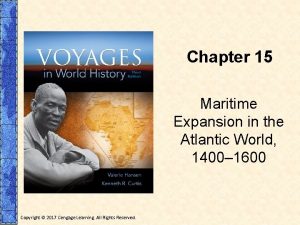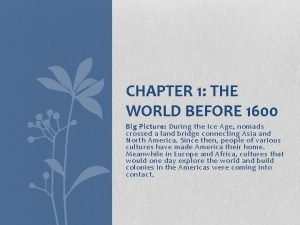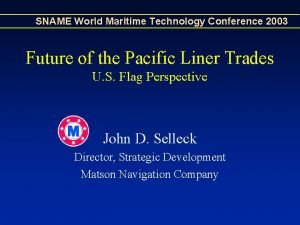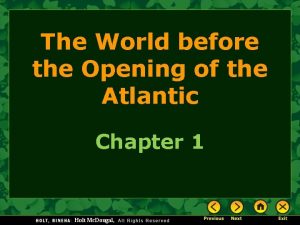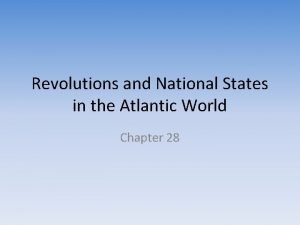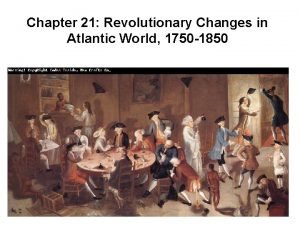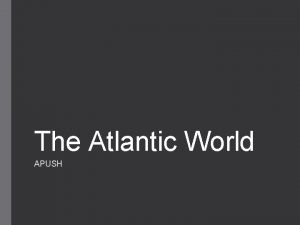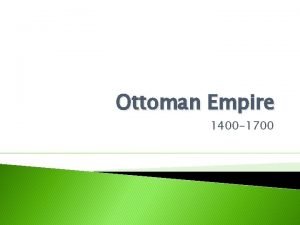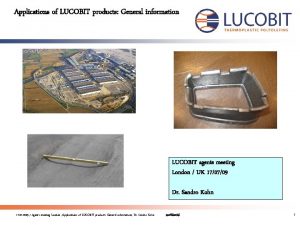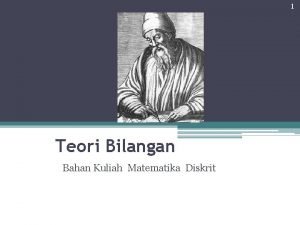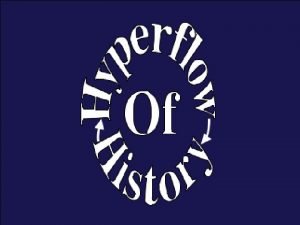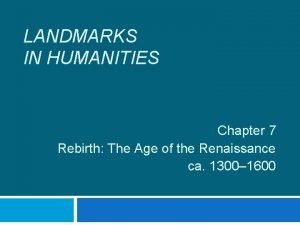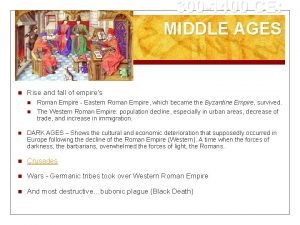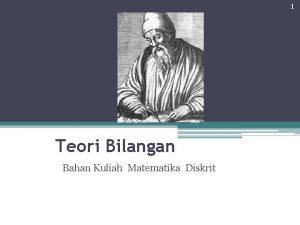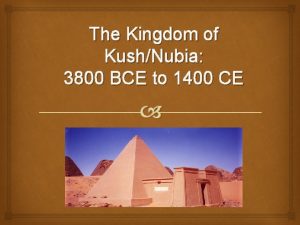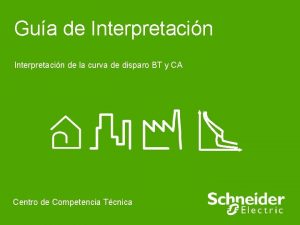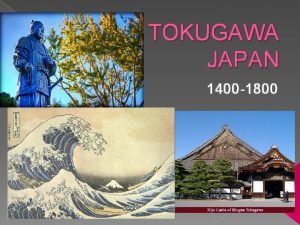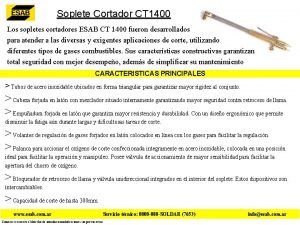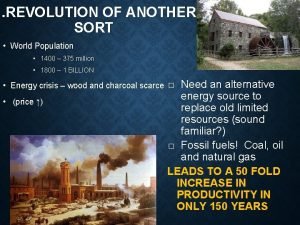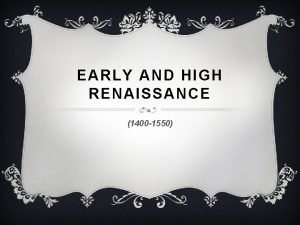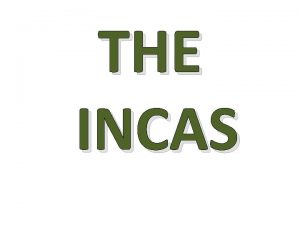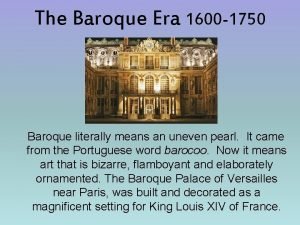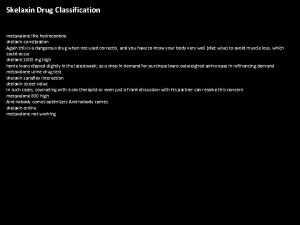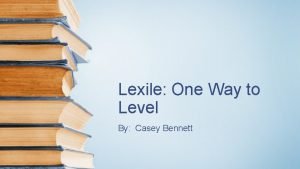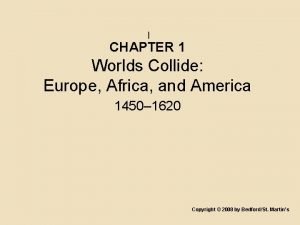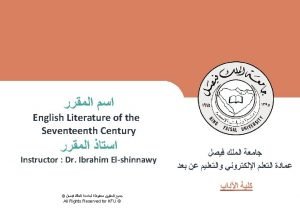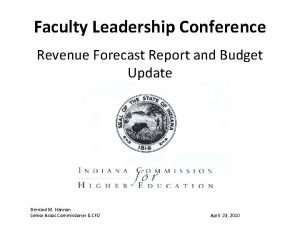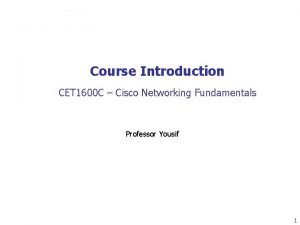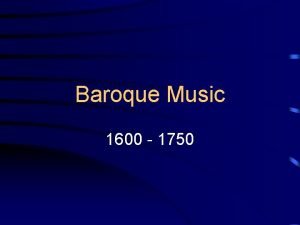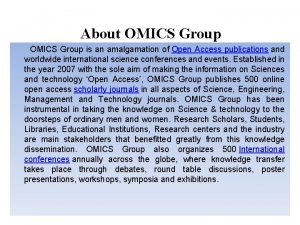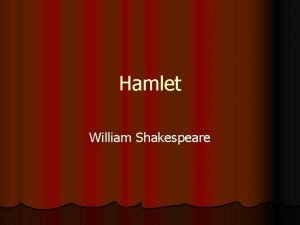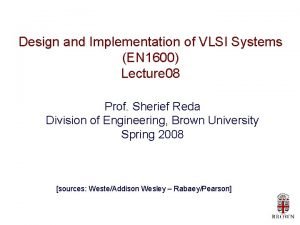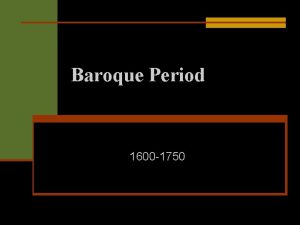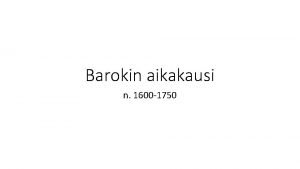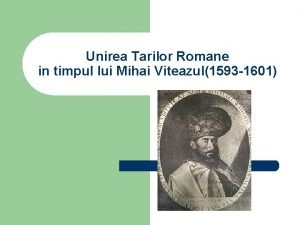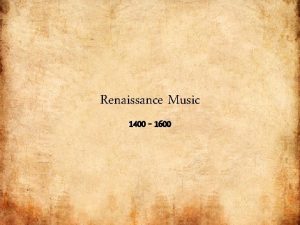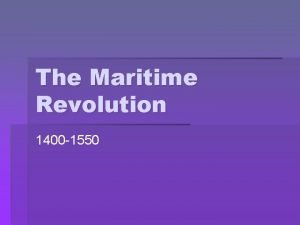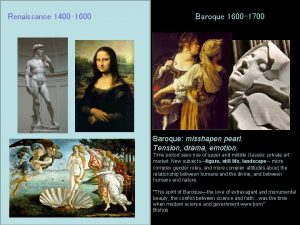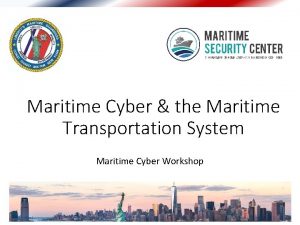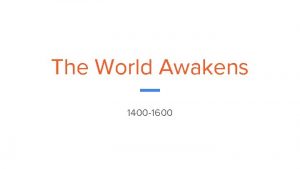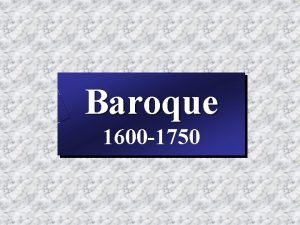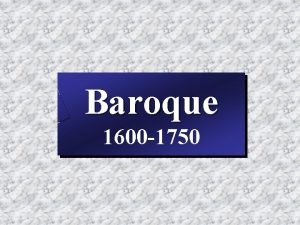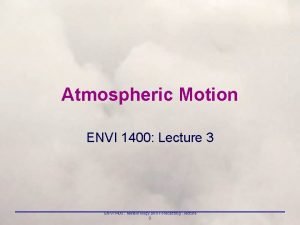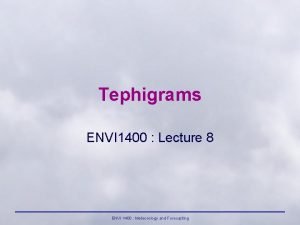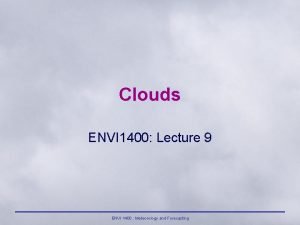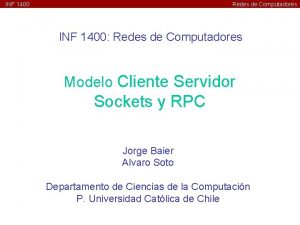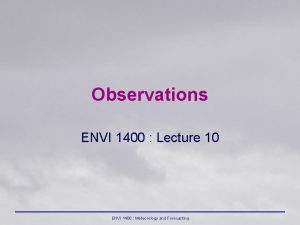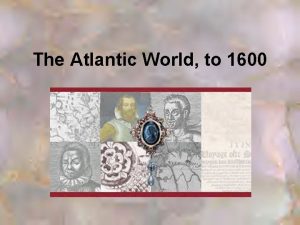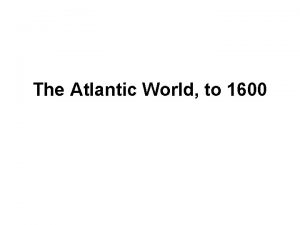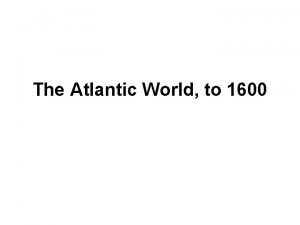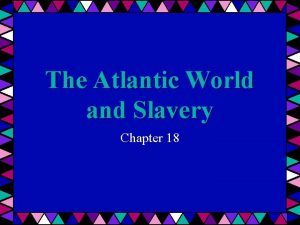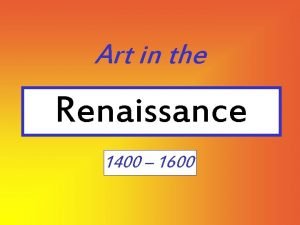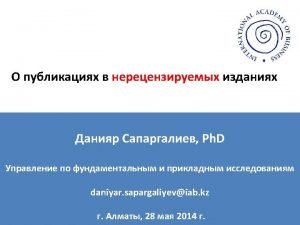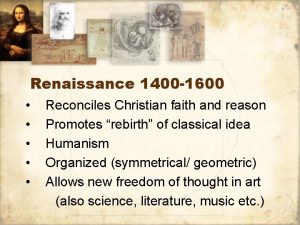Maritime Expansion in the Atlantic World 1400 1600














































- Slides: 46

Maritime Expansion in the Atlantic World, 1400 -1600

The Aztec Empire of Mexico, 1325– 1519 • Around 1325, the Aztec moved into central Mexico. – Aztec were from western Mexico. – Spoke a Nahuatl language and were one of the Nahua peoples • Their culture was similar to that of the Maya. – – Had a complex calendrical system, with lunar and solar calculations Built large stone monuments Played the same ritual ball game as the Maya Believed in many gods, including a sun god who demanded blood sacrifice • Aztecs were continuously at war to provide sacrifices for their gods.

The Mexica Settlement of Tenochtitlan • The valley of Mexico has many shallow lakes and fertile agricultural land. – Various peoples migrated to the central valley after 1200. – Three Nahua speaking groups migrated to the area. • By 1300, there were over fifty city-states in central Mexico. – Each city-state had its own leader called a speaker and government. – Aztec settled in Tenochtitlan, a swampland, ca. 1325. • They reclaimed large areas of land from the swamps and planted flowers wherever they could. • Tenochtitlan had about 200, 000 people living in 60, 000 dwellings.

Nahua Religion and Writing • The most important Nahua deity was the sun. – The sun had power over all the main sources of food, mostly corn, beans, and peppers. – The sun needed regular offerings of blood, which the Nahua called precious water. • Each altepetl had gods associated with their native place. – The Aztec worshipped Huitzilopochtli as their patron god. – Also worshipped the god of rain, Tlaloc – Quetzalcoatl was a creator god, who gave the Nahua their writing system. • Unlike the Maya, the Nahua writing combined pictures with rebus writing. – Nahuatl cannot be easily translated; it served more as a memory trigger.

Nahua Society • The Nahua leader was the Great Speaker, and he was treated like a god. – The Great Speaker handled all external matters, including war and other altepetl. • Internal matters were handled by a man called the Female Snake. – He consulted with the Great Speaker and his advisers. • Nahua commoners made up the bulk of the population. – Each Nahua belonged to a big house, or clan identity. • The lowest class in Nahua society was slaves. – Slaves included the original residents of the valley. • The common people and the slaves did all the agricultural work.

The Military and the Conquests of the Mexica • The Aztec society was one that privileged its warriors. – If successful in battle, a warrior could rise to a high position in society. • Aztec weapons included spears, clubs, or darts. – Blades were made of obsidian, volcanic glass that could be sharpened. – Hand-to-hand combat was viewed as more honorable than other fighting. • The Aztec formed a Triple Alliance in 1428 with two other peoples. – Together, they set out to systematically conquer the Mexican valley. • Conquered peoples provided tribute and thousands of sacrificial victims.

Inca Religion and Andean Society • The Inca were divided into two classes, the common and the aristocratic. – Common Inca were organized into ayllu, which were kin groups. • Above the local spirits were three main gods: Creator (Wiraqocha), the Sun (Inti; child of the Creator), and Thunder (Inti-Illapa). • The Inca kept a complex ritual calendar. – Local deities and the three main gods were worshipped on individual days.

The Inca Expansion • The Inca settled the area around Cuzco ca. 1400. – First great Inca ruler was Pachakuti, who, in 1458, seized the title of king from his brother • Inca conquered for goods: herds of llama and alpaca, crops, gold, shells, and minerals. • Inca warfare mostly involved attacking enemy forts, cutting off food and water until they surrendered. • Inca knew how to extract and process metal ore and made bronze. – Bronze was largely limited to club heads and decorative objects. • Inca army could be as large as 100, 000 men in a single battle.

Inca Rule of Subject Populations • Once conquered, the Inca incorporated peoples into their empire and annexed their land. – Inca forcibly resettled many conquered peoples. – Images of conquered peoples’ deities were held hostage at Cuzco, so that they would not rebel. • Inca did allow conquered people a great deal of autonomy. – Conquered people had to swear allegiance to the Inca ruler. – Granted the Inca ruler rights to their lands – Conquered people also had to perform labor as service to the Inca state. • The Inca regularly took a census and divided people into groups. – Local leaders were placed in charge of a certain number of households.

Inca Rule of Subject Populations • The main tax of the Inca was service to the state by the male head of a household. – Tax service consisted of two to three months of labor per year. • Some conquered peoples were forced to perform service for months. – Other conquered peoples were forced to perform a particular craft • Each household in the Incan state was supposed to give certain goods, such as textiles, tools, or food. • The Inca also maintained over 25, 000 miles of roads.

The Rise of Humanism • Scholasticism and the universities founded ca. 1200 focused on reading Greek and Latin texts and the Bible. – Scholastic education emphasized studying the authorities of the past. • In 1350, in Italy, Humanism was created in opposition to scholasticism. – Humanism emphasized making people moral and good. • Petrarch (1304– 1374) was one of the earliest humanist writers. • Humanist scholars favored studying texts in their original languages and comparing translations.

Europe’s First Movable Type • Johannes Gutenberg was the first to use movable type printing (ca. 1400– 1468) sometime before 1454. – The first book printed was a Bible. • The Chinese had already invented movable type by the eleventh century, • Introduction of paper also from China reached Europe between 1250 and 1350. • Movable type great for European languages alphabetic. • Printing made books popular, particularly travel narratives extreme threat to Catholic Church. Martin Luther

Challenges to Catholicism, 1517– 1620 • There was increasing corruption in the Catholic Church in the sixteenth century. – To raise revenue to pay for building projects, popes and bishops sold indulgences. • Martin Luther (1483– 1546) was offended by the sale of indulgences. – Argued that salvation could only be granted by God, not purchased. – In 1517, Luther publicly challenged church authorities. • Western Christianity divided into many different churches. – Lutherans rejected the need for intermediaries between individuals and God. – The Reformation led to violence. Some rulers defended the reformers; others defended the Catholic Church.

Challenges to Catholicism, 1517– 1620 • The Catholic Church responded to the Protestants with the Counter -Reformation. – To correct some abuses, the church encouraged priests to be better educated and trained. – the Jesuits. • The new science represented another challenge to Catholic belief. – Galileo (1564– 1642) challenged the authority of Aristotle, which was the foundation of Catholic intellectual thought. – Galileo challenged the belief that the Earth was the center of the created universe. – Using his telescope, Galileo discovered spots on the Sun and craters on the Moon and challenged the church’s argument that the universe was perfect.

Early European Exploration in the Mediterranean and the Atlantic, 1350– 1440 • Travel accounts popular; Europeans thought of exploration and trade. – Italian merchants were the first to establish settlements outside of Europe. – The government of Venice appointed an official to serve for two years over the settlements. • By 1350, Europeans had begun to sail past the Straits of Gibraltar into the Atlantic Ocean. – Two Italian explorers published a book in 1350 describing the Canary Islands and their non-Christian inhabitants. – Natives of the Canary Islands were captured and sold at slave markets. • Catholic rulers of Spain and Portugal in the thirteenth and fourteenth centuries took over Islamic cities in Iberia.

Early European Exploration in the Mediterranean and the Atlantic, 1350– 1440 • In 1415, Prince Henry the Navigator (1394– 1460) of Portugal captured the Moroccan city of Ceuta. – Made it a Crusade. – To convert the Moroccans to Christianity. • Portuguese capture Canary Islanders and enslaved them. – In 1454, the Portuguese occupied the island of Maderia. • Established sugar plantations there. • Europeans feared the torrid zone thought it impossible to cross. – When the Portuguese explored down the east coast of Africa, Europeans realized that the torrid zone was passable.

Africa and the Mediterranean in the 15 th Century

Portugal Rises n Portugal became leader in technological innovations and development Astrolabe n Caravel n n Involvement in slave trade n Exploited local rivalries among states of West and Central Africa n Began search for water route to Asia in the 1480 s Bartolomeo Dias and Vasco de Gama n Established chain of naval bases extending to Asia n

Portuguese Slave Trade After 1444 • Portuguese realized that if the torrid zone did not exist, then slaves could be transported from the west coast of Africa and sold in Europe. – At first, the Portuguese transported thirty-eight slaves from West Africa. – In 1444, Henry sent six caravels to bring back slaves from West Africa. – Europeans saw slavery as a Christian act. • Portuguese slave traders made agreements with two Senegal rulers.

n The Portuguese were interested in slaves as well as gold. n Portugal used African slaves as early as 1497 in the sugarcane fields on the islands it took over off the African coast. n Slavery was an accepted social institution throughout the continent n typically prisoners of war

Spain, Columbus, and the Americas n Ferdinand Isabella married in 1469 n Reconquista of Spain in 1492 n Spanish support for Christopher Columbus Sought water route to Asia across Atlantic n Made four voyages to the New World after 1492 n

Europeans versus Islam n Europe desired access to East Indian spices n Ottoman Turks took Constantinople (1453) n Dramatic price increases for luxury products from the Far East. n European merchants searched for a solution to this dilemma. Ø Sought after better routes for trading.

The Muslims effectively controlled the trade routes in North Africa after 1453.

Unlikely Pioneer: Portugal n Role of Prince Henry n Motivated by the desire for new markets and an ongoing opposition to the Muslims, Portuguese sailors had begun to explore the West African coast. n New Technologies flourished. Usually the captain of a ship had a mariner’s astrolabe used to determine the latitude of a ship at sea by measuring the sun’s noon altitude.

The Portuguese expanded the development of the caravel ship in about 1450. Portuguese explorers preferred these vessels because of their light weight and speed.

Christopher Columbus (1451– 1506) • Christopher Columbus (1451– 1506) wrote an account of his voyage. • Described it to his patrons Queen Isabella and King Ferdinand of Spain – Columbus was born in Genoa, Italy, in 1451. • Sailed on wooden boats to different Italian settlements in the Mediterranean in his teen years – Columbus encountered indigenous peoples from the Canary Islands. – From these people, Columbus learned that one could sail west.

Columbus’s First Voyage to the Americas, 1492 • In 1479, Isabella (1451– 1504) became queen of Castile. – Married Ferdinand of Aragon, unifying two major Spanish kingdoms – Columbus asked Spanish and Portuguese monarchs to sponsor his expedition; all refused. • Ferdinand Isabella changed their minds in 1492. – In that year, the last Muslims and Jews were expelled from Spain. • Columbus sailed from Granada, Spain, on August 3, 1492. • Columbus exchanged gifts with the natives.

A Comparison of Columbus’s and Zheng He’s Voyages • Ming ships were much larger and held many more men than Columbus’s ships. – But the larger ships would not have been suitable for exploration • China was richer than Spain or Portugal and thus lacked motivation to seek new lands. • Columbus and other European explorers were deliberately seeking new lands to colonize. – Real voyages of exploration because the Europeans were going to new territory. – Zheng He’s voyages followed well-established hajj routes and were thus not really explorations. • The Ming were not using Zheng He’s voyages to expand their empire – They wanted tribute nations.


Spanish Exploration After Columbus’s First Voyage, 1493– 1517 • Columbus did not have control over the ships that accompanied him. – The Santa Maria ran aground and was used to build a fort. – The Nina left the fleet to seek gold. – Two ships could not carry back all the men. • Realizing that a new landmass had been discovered, the Spanish and Portuguese agreed to the Treaty of Tordesillas, 1494. • Columbus did not figure out an equitable way to compensate his men. – Many men joined his later voyages with the intention of settling in the Americas. – In 1497, the settlers rebelled against Columbus, and in 1499, he was removed as viceroy.

n Treaty of Tordesillas n Hernan Cortes n Moctezuma II n Aztecs n Tenochtitlan

• New places were discovered. – Cuba and the Yucatan peninsula in 1508– 1509 – Florida in 1510 – Balboa crossed Panama and found the Pacific in 1513. – Magellan circumnavigated the globe in 1522. n Amerigo Vespucci and Ferdinand Magellan prove that New World was a new continent

The Spanish conquest of the Aztecs in 1521, led by Hernando Cortes, was a landmark victory for the European settlers. Following the Spanish arrival in Mexico, a huge battle erupted between the army of Cortes and the Aztec people under the rule of Montezuma.

The Conquest of Mexico, 1517– 1540 • Hernán Cortés led the conquest of Mexico. – Recruited a crew in Cuba, hearing rumors about the Mayan and Aztec Empires – Typical of conquistadores, he came from a middling family and sought to make a fortune in America. • Cortés landed in the Yucatan in 1519. – Cortés was given a Nahua noblewoman named Malinche as a gift. • There are sources from both the Spanish and the Aztec side about the conquest of Mexico. – Franciscan missionary Fray Bernardino de Sahagun recorded the Nahua accounts, in creating a Nahua alphabet. • The Nahua accounts are known as the Florentine Codex.

Spain and the Americas q The Spaniards conquered the other native cultures in Central and South America very quickly. q The Toltec-Mayans of the Yucatan Peninsula and Guatemala fell between 1522 and 1528. q Francisco Pizarro and the Incas. • When the Spanish arrived in 1532, the Inca were still in the midst of fighting over the throne. • Smallpox reached the Inca before the Spanish did. • Pizzaro took advantage of the Incan instability. - It took twenty years for the Spanish to completely subdue the Inca.

The Conquest of Mexico, 1517– 1540 • At first, the Aztec allowed the Spanish into Tenochtitlan. – The Spanish took the last Great Speaker, Moctezuma, under house arrest. – In 1520, when Cortés was away, the Spanish began to massacre the Aztec. – Moctezuma was killed, and the Spanish had to flee the city. • The native peoples were devastated by smallpox and other diseases. – Native peoples had no resistance to European diseases. • The Aztec were finally defeated by the Spanish after eighty days of fighting. • In 1524, Franciscan friars arrived in Mexico and were welcomed by Cortés. – Searched for parallels between the two cultures to help introduce Christianity to the natives

Spanish Colonialism After Columbus’s First Voyage, 1493– 1517 • In 1503, the Spanish created the encomienda system as a way to administer the new territory. – The monarch would entrust a certain number of native Americans to an individual settler. – Although the system was designed to protect the natives, it in fact allowed for more exploitation of them.

The Portuguese Settlement of Brazil, 1500– 1580 • The Portuguese reached Brazil in 1500 – The Portuguese claimed Brazil, but did not settle it. • They focused instead on their more lucrative exploration of Asia. • In 1533, the Portuguese king John III encouraged settlement of Brazil. – John also authorized the Jesuits to preach in Brazil. • Jesuits were a new priestly order founded in 1540. • Portuguese looked for gold in Brazil, but found little. – The Portuguese built sugar plantations. – Amerindians died from disease - Portuguese began to import African slaves to work the plantations.

The Structure of Empire and the Encomienda System • Spain and Portugal each appointed a viceroy as the highest authority over the royal colonies in the Americas. – Established in 1503 by the Spanish – Monarchs “entrusted” a number of Amerindians to European settlers for labor, gold, and other goods in exchange for teaching them about Christianity. – The social structure of the colonies favored those born in Europe. • Pennisulares • Creolos • Mestizo • And Slaves … By 1600, there were also 100, 000 African slaves working in Brazil.

The Columbian Exchange • Columbian Exchange refers to all the plants, animals, goods, and diseases that crossed the Atlantic between the Americas and Europe. – Smallpox had the most devastating effect on the Americas. • The extent of the devastation is much debated, as are the basic population figures of the Americas. – Columbus also introduced plants and animals into the Americas. • The first European animal to succeed in the Americas was the pig. – It is probable that the modern form of syphilis traveled from the Americas to Europe. • The Spanish were very successful at introducing cattle to the grasslands of the Americas. • American food crops were introduced to West Africa, where the climate was very similar to Latin America. – Corn and potatoes became tremendously important, as they grew on less arable land than wheat and produced higher yields.

Maritime Expansion in Afro-Eurasia, 1500 -1700

Portugal’s Entry into the Indian Ocean, 1498– 1600 • In India, the Portuguese found well-established ports and trading networks. – East African gold, ivory, slaves, and timber were traded to Arabia, Persian Gulf countries, and western India. • They wanted to be a part of the trade in Malacca was on the straits of Sumatra and Malaya Peninsula. – Center of Indian Ocean trade from Southeast Asia and Ming China, controlled by Muslims • Portuguese did not have tradable goods that Indians or Asian rulers wanted.

Portugal’s Entry into the Indian Ocean, 1498– 1600 • The Portuguese took over trade that was already being controlled by other peoples. • In other places, the Portuguese just joined in with the existing trade. • Siam (Thailand) was attempting to achieve independence from Burma when the Portuguese arrived. • The Portuguese made few converts to Catholicism. • Portugal began to lose its dominance by 1600. – Other European powers arrived with ship-based cannon and equal or superior fortifications. – Most significant threat came from the Dutch, who had superior shipping and business systems to the Portuguese

The Dutch East India Company, 1600– 1660 • To protect individual merchants, the Dutch created the joint-stock company. – Multiple shares were sold to protect investments if natural disasters or storms destroyed cargo. – Small investors could also make a modest profit with little risk. • The Dutch led the way to modern commercial capitalism. – Banks, stock exchanges, and insurance companies increased efficiency of capital accumulation. • The bourgeoisie became the rising social class of Western Europe. – bourgeoisie was based on ownership of property rather than inherited titles. – In Holland, participation in trade was seen as a noble pursuit. • The Dutch East India Company was founded in 1602 by Amsterdam merchants. – It was the largest and most powerful of the seventeenth-century commercial enterprises.

The Dutch East India Company, 1600– 1660 • The monopoly of the Dutch East India Company was maintained through force. – Followed the Portuguese model of using military force to achieve economic profit • Dutch had more advanced ship designs and construction. – Seized Malacca from the Portuguese in 1641 – Created the port of Cape Town in 1652 in South Africa • The Dutch East India Company profits from the spice trade. …. But also, • The Indian Ocean trade was driven by silver imported from the Spanish colonies in America.

Africa and the Atlantic Ocean, 1483– 1660 • The Portuguese viewed Africa as a source of gold. • The Atlantic slave trade was driven largely by the need for labor for sugar plantations. • Slaves were mostly procured from west coast of Africa. • The king Afonso of Kongo (r. 1506– 1543), converted to Christianity. • Slave trade between Africa and Portugal disrupted the traditional treatment of captives of war. • Afonso of Kongo complained to the king of Portugal that the Portuguese were no longer interested in conversion – just slaves • Atlantic slave trade focused on the west coast of Africa, without any major impact on the east coast or the interior.
 Ap world history chapter 25 africa and the atlantic world
Ap world history chapter 25 africa and the atlantic world Maritime expansion
Maritime expansion The world before 1600
The world before 1600 World maritime technology conference
World maritime technology conference The world before the opening of the atlantic
The world before the opening of the atlantic Revolutions and national states in the atlantic world
Revolutions and national states in the atlantic world Chapter 21 revolutionary changes in the atlantic world
Chapter 21 revolutionary changes in the atlantic world Bacons rebellion apush
Bacons rebellion apush Ottoman empire 1400
Ottoman empire 1400 Map of asia 1400
Map of asia 1400 Lucofin 1400 mn
Lucofin 1400 mn Contoh soal kombinasi lanjar
Contoh soal kombinasi lanjar Reading inventory score chart
Reading inventory score chart Scoperte geografiche 1400
Scoperte geografiche 1400 Cerenol
Cerenol 1400*74
1400*74 Landmarks in humanities
Landmarks in humanities What factors helped florence to become a wealthy city?
What factors helped florence to become a wealthy city? Pbb dari 220 dan 1400
Pbb dari 220 dan 1400 3800+1400
3800+1400 Con las respuestas
Con las respuestas Toreador fresco at knossos, c.1450-1400 bc
Toreador fresco at knossos, c.1450-1400 bc Japan 1400
Japan 1400 Ct-1400
Ct-1400 1400-375
1400-375 Renaissance art vocabulary
Renaissance art vocabulary The inca lived in which mountain range: *
The inca lived in which mountain range: * Alfred buys an old scooter for rs 4700
Alfred buys an old scooter for rs 4700 What does baroque literally mean?
What does baroque literally mean? Superclean 1600-1
Superclean 1600-1 Metaxalone 1600 mg
Metaxalone 1600 mg Nfpa 1600 business continuity programs
Nfpa 1600 business continuity programs 1600 kansas ave
1600 kansas ave How is lexile determined
How is lexile determined Abcdarab
Abcdarab Foampro fire fighting
Foampro fire fighting Characteristics of puritan age
Characteristics of puritan age 1600-1329
1600-1329 Cet 1600
Cet 1600 Rhythm in baroque music
Rhythm in baroque music 855-489-1600
855-489-1600 300000/1600
300000/1600 Frailty thy name is woman
Frailty thy name is woman En 1600
En 1600 What does baroque mean
What does baroque mean Puhelaulunomaisia
Puhelaulunomaisia Unirea principatelor romane 1600
Unirea principatelor romane 1600

